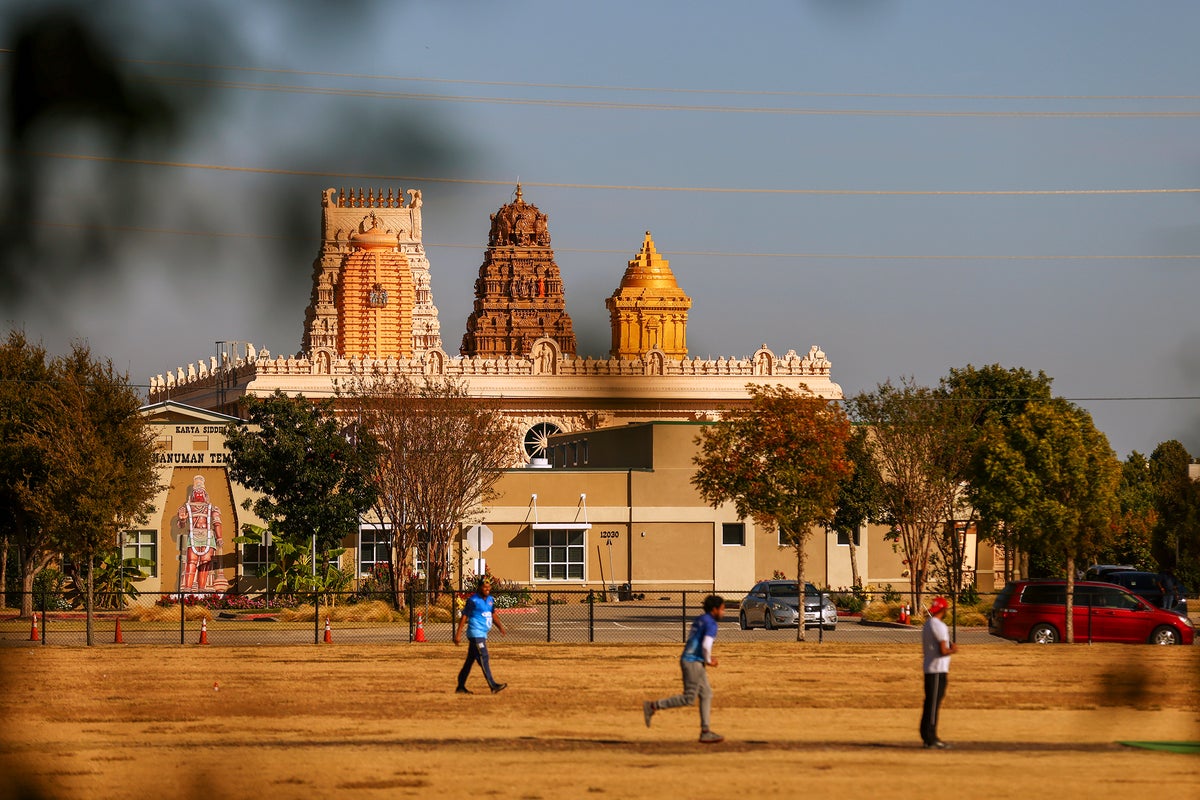
EDITORS/NEWS DIRECTORS:
The Asian population alone, not in combination with any other race, was the fastest growing stand-alone racial and ethnic category in the U.S. in the last decade, swelling by 35.5%, according to the 2020 census.
The Dallas-Fort Worth Metroplex had the largest Asian growth rate among the most populous U.S. metros from 2010 to 2020, but it also jumped in metro Houston, Atlanta, Seattle, Phoenix, Boston and Tampa.
The number of people who identify as Asian alone or Asian combined with another race now stands at 24 million people, making up 7.2% of the total U.S. population. It is an incredibly diverse population, with the two largest subgroups, Indians and Chinese, each having 4.1 million people. But some subgroups are better represented in their communities than others. For instance, the largest Asian population in Chicago is Indian, but it is Hmong in Minneapolis, Chinese in Boston and Filipino in San Diego. The rapid growth in these populations is rich with dynamic story possibilities, depending on the unique circumstances in each community. Find AP's coverage here.
Here’s a look at how to report on Asian population growth in your area:
REPORTING THREADS
— Let’s start with the basics by looking at how fast the Asian population grew in your community over the last decade. A good place to start is the U.S. Census Bureau’s redistricting data. If you click on the “race” table, you can then narrow the geographies to your community by clicking the “Geos” tab. You can compare the 2020 numbers to the 2010 numbers by clicking on the tab underneath the table’s title. If you want to look at growth so far this decade, your best bet is the bureau’s Population and Housing Unit Estimates tables or the 2021 American Community Survey 5-Year data sets.
— What push-pull factors brought new Asian residents to your community? Asian communities in California and Hawaii date back to the middle of the 19th century with the arrival of Chinese miners, railroad workers, farmers and fishermen. Asian communities along the Gulf Coast grew substantially in a short period of time in the 1970s following the arrival of residents from Vietnam who found work in the shrimping industry. In the past decade, the suburbs of Dallas have seen an influx of Indian professionals from California and elsewhere who were lured by less expensive housing and good schools. Migration data from the U.S. Census Bureau gives you a partial answer. It isn’t broken down by race so it can’t give you perspective on U.S.-born residents, but it will tell you how many people from Asia moved to your community. The American Community Survey offers breakdowns by subgroups, such as Hmong or Japanese, and you can see which subgroup drove the population growth by comparing 2021 tables with 2011 tables.
— What has been the impact of Asian growth in your community and how has it rubbed off on the larger culture? In suburban Dallas, Tikka Taco serves tacos on naan and sides of chutney next to guacamole in a mash-up of Indian and Tex-Mex. Many cities in suburban Dallas hold community-wide celebrations for the Indian holiday, Diwali. Contact local religious institutions or chambers of commerce to start your reporting.
— Is political representation equal to the population? If not, what factors have prevented that? Reach out to local political parties to see if they have clubs focused on their Asian communities, like the North Texas Asian Democrats or the Texas Asian Republican Assembly in metro Dallas.
— Hate crimes. For almost three years now, Asian Americans and Pacific Islanders across the U.S. have endured racist verbal, physical and sometimes deadly attacks fueled by the coronavirus pandemic. Reach out to your local law enforcement to find out if any have occurred in your communities. Find out how law enforcement and your local communities are responding.
— Don’t forget the people. If your community has seen an infusion of new residents from Asia, they could be drawn by particular industries or types of work, or there could be a combination of factors at work. Find new residents, ask what drew them to your community and tell their stories.
RESOURCES
Pew Research Center has published several recent reports on Asian American life, including Key facts about Asian Americans, a diverse and growing population and What It Means To Be Asian in America.
Brookings also writes regularly about issues facing Asian Americans, most recently with Confronting the invisibility of anti-Asian racism and Are Asian Americans people of color or the next in line to become white?
The U.S. Census Bureau issued a report on the U.S. Asian and Hawaiian and Pacific Islander population earlier this year. Finally, The Asia Society provides a quick look at the history of Asian Americans.
MORE TO COME
More detailed information about Asians in the U.S. is coming next year when the final data sets from the 2020 census are released. The new data sets will provide the population counts and sex and age statistics for approximately 370 detailed racial and ethnic groups and 1,200 American Indian and Alaska Native tribes and villages.
___
Localize It is an occasional feature produced by The Associated Press for its customers’ use. Questions can be directed to Katie Oyan at koyan@ap.org
___
Terry Tang is a member of The Associated Press’ Race and Ethnicity team. Follow her on Twitter: @ttangAP
Follow Mike Schneider on Twitter: @MikeSchneiderAP







